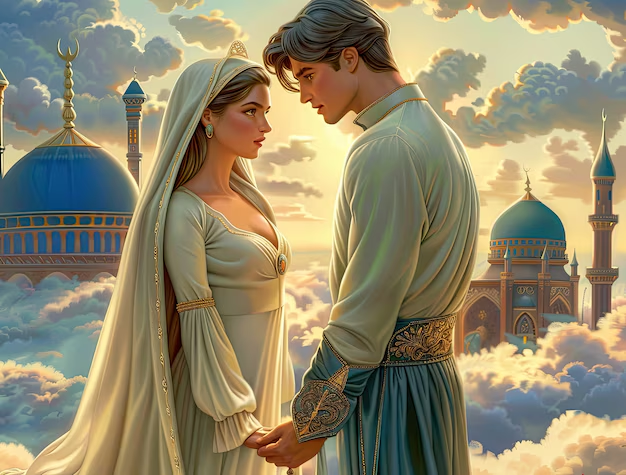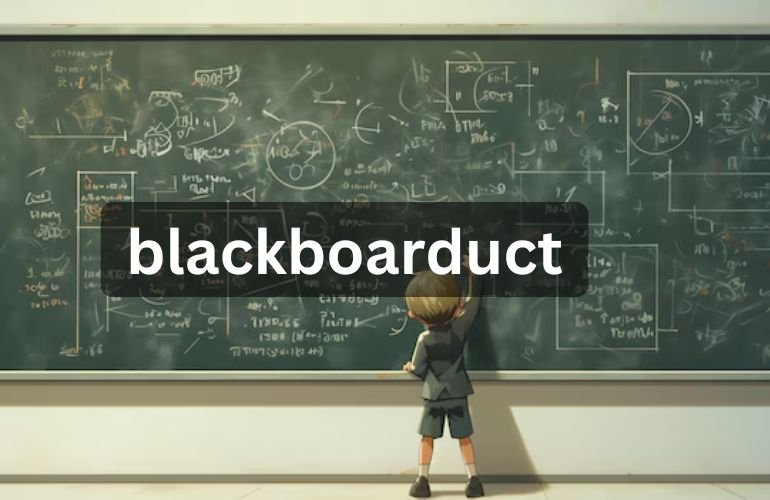Turkey is a land where history, culture, and innovation blend seamlessly. From the bustling streets of Istanbul to the quiet ruins of ancient civilizations, the country holds stories that enchant visitors and locals alike. Recently, Turkish animation has emerged as a new way to share these stories with the world, capturing the essence of Turkish heritage and landscapes in vibrant detail.
Table of Contents
The Rise of Turkish Animation Studios
Turkish animation has undergone a remarkable evolution in recent years, driven by the creativity of local studios eager to bring unique stories to life. Initially, the animation industry in Turkey focused on producing content primarily for children. However, as the demand for animated content grew, studios began to expand their range, exploring new genres and themes that reflect both Turkish culture and modern storytelling techniques.
Several studios, such as Anima Istanbul, Grafi2000, and ISF Studios, have made notable contributions to this growth. These studios have created works that highlight the richness of Turkish heritage while also experimenting with global trends in animation. Anima Istanbul, for example, has become known for its high-quality animated features and commercials, combining traditional Turkish elements with modern animation techniques. Grafi2000, on the other hand, is well-recognized for its humorous content, catering to a broad audience and often addressing current social themes. ISF Studios has gained popularity for its educational animations, which are particularly appealing to younger viewers and emphasize moral lessons.
The animation industry’s expansion in Turkey is also attributed to the adoption of advanced technologies. Turkish studios have embraced digital animation software, 3D modeling, and enhanced motion-capture techniques, allowing them to produce animations that compete on a global scale. These technologies have opened up possibilities for more detailed and expressive animations, which appeal to diverse audiences.
In addition to domestic success, Turkish animation studios have increasingly focused on international collaborations, expanding the reach of Turkish animation. Collaborations with studios in Europe and Asia have introduced Turkish storytelling to new audiences, fostering cross-cultural exchanges that enrich the content. As a result, Turkish animated films and series have started to gain recognition at international film festivals, a sign of the industry’s growing influence.
Government support has also played a role in the animation industry’s growth. Funding programs, tax incentives, and partnerships have encouraged studios to invest in larger projects, contributing to the industry’s sustainability. These initiatives have not only spurred economic growth but have also established Turkey as a regional hub for animation, attracting both local talent and international interest.
Overall, the rise of Turkish animation studios signals a promising future for the industry. By embracing both cultural heritage and technological innovation, Turkish animators are creating a vibrant, diverse body of work that resonates with audiences both at home and abroad. The growth of these studios marks an exciting chapter in Turkey’s cultural evolution, highlighting the country’s capacity for storytelling and creativity in new and dynamic ways.
Popular Turkish Animated Characters & Shows
Turkish animation has produced a variety of memorable characters and shows that have gained popularity both domestically and internationally. These creations reflect Turkish culture, language, and values, making them especially relatable to local audiences. At the same time, their unique stories and engaging animations have allowed them to resonate with viewers around the world. Here’s a look at some of the most well-known characters and shows in Turkish animation.

Rafadan Tayfa:
Rafadan Tayfa has become one of Turkey’s most beloved animated series. Set in a traditional Turkish neighborhood, it follows the adventures of a group of kids, each with distinct personalities, as they explore their surroundings and tackle challenges together. The show captures the essence of Turkish street culture, complete with lively music, vibrant characters, and playful humor. It emphasizes friendship, teamwork, and community values, presenting a nostalgic view of Turkish urban life that appeals to both children and adults. Rafadan Tayfa has not only succeeded on Turkish television but has also inspired movies, merchandise, and theme park attractions, cementing its status as a cultural icon.
Kötü Kedi Şerafettin (Bad Cat):
For those seeking humor with an edge, Kötü Kedi Şerafettin offers a different flavor of Turkish animation. The series features Şerafettin, a mischievous cat known for his crude humor, wild antics, and unapologetic attitude. Based on a popular Turkish comic book, the character’s adventures are filled with satire and humor targeted at an older audience. This character’s unique personality has attracted fans looking for something different from family-friendly content. With its gritty animation style and bold storytelling, Kötü Kedi Şerafettin has made an impact on Turkish pop culture and brought a fresh perspective to the animation scene.
Pepee:
One of Turkey’s earliest animated series aimed at young children, Pepee has been incredibly influential in early childhood education. The show revolves around Pepee, a curious and friendly little boy who learns about the world through various experiences. Each episode incorporates Turkish songs, language, and cultural references, making it a valuable tool for language learning and cultural understanding among preschool viewers. Pepee’s adventures include moral lessons and simple problem-solving, and its gentle storytelling style is designed to engage children and foster a love for learning. The character has become a staple in Turkish households, and Pepee merchandise is widely available, showcasing the show’s lasting popularity.
The Role of Cultural Elements in Turkish Animation:
These popular shows are successful not only for their engaging characters but also for how they incorporate Turkish culture into their narratives. Rafadan Tayfa reflects the spirit of local communities, Kötü Kedi Şerafettin captures Turkish humor in a bold, modern way, and Pepee provides a connection to language and tradition for young viewers. By blending everyday experiences with animated storytelling, these characters offer insights into Turkish life that viewers across different backgrounds can enjoy.
Growing Appeal Beyond Turkey:
As Turkish animated shows grow in popularity, they are increasingly available on streaming platforms with subtitles and dubbing, making them accessible to international audiences. This wider availability has allowed viewers from other cultures to experience Turkish stories, art, and humor, contributing to a growing fanbase beyond Turkey’s borders. This global reach has helped Turkish animation gain recognition and has sparked interest in more cross-cultural projects, introducing Turkish animated characters to the world stage.
By crafting characters that reflect Turkish values and traditions, Turkish animation has created a special connection with audiences, building a loyal following for these animated shows. The combination of local culture, relatable storylines, and strong character development ensures that these shows continue to thrive and inspire viewers both within Turkey and internationally.
Technological Advancements in Turkish Animation
The Turkish animation industry has embraced technology to enhance storytelling, producing content that competes on an international level. By adopting modern techniques, Turkish studios have improved the quality and creativity of their animations, allowing them to capture detailed visuals and unique styles that resonate with audiences worldwide. Key technological advancements have played a role in the industry’s development, from digital animation software to the use of motion capture and 3D modeling.
Digital Animation Software and Tools
Turkish animators increasingly rely on advanced software to bring their characters and stories to life. Programs such as Toon Boom, Adobe Animate, and Blender enable artists to craft intricate animations with more flexibility than traditional methods. These tools allow for smoother animations, enhanced visual effects, and vibrant color palettes, making the final products visually engaging. The shift to digital platforms has streamlined the animation process, enabling teams to experiment with new techniques and styles that would have been time-consuming or impossible with traditional hand-drawn methods.
3D Modeling and Animation
While 2D animation remains popular, 3D modeling has expanded the possibilities for Turkish animation studios. With 3D software like Maya, Cinema 4D, and Autodesk 3ds Max, animators can create complex, realistic environments and characters that offer a fresh visual experience. This technology adds depth and detail to the animation, allowing creators to design immersive worlds that captivate audiences. Rafadan Tayfa, for example, has incorporated 3D elements to make the neighborhood and its surroundings more lifelike, enriching the viewing experience for fans of all ages.
Motion Capture and Enhanced Character Animation
Motion capture technology has enabled Turkish animators to improve character movements, making them more lifelike and relatable. This process involves recording an actor’s movements and applying them to digital characters, creating natural gestures and expressions. Motion capture allows animators to focus on storytelling while achieving a high level of precision and detail in character movements. Turkish studios have begun using this technology in action-packed scenes and complex character interactions, elevating the overall quality of their work.
The Influence of Streaming Platforms
Streaming platforms like Netflix, YouTube, and Amazon Prime have also played a role in advancing Turkish animation. These platforms provide an accessible way for Turkish animated shows to reach a global audience, which has encouraged studios to adopt standards that meet international expectations. The rise of streaming has pushed animators to produce high-quality content with subtitles and dubbing options, which expand the reach of Turkish animation and bring it into the homes of viewers around the world. By catering to global streaming standards, Turkish studios have improved their production techniques, enhancing their technical skills in the process.
Collaboration and Cross-Cultural Projects
Technology has also facilitated collaborations between Turkish animators and international studios. These partnerships introduce Turkish animation to new audiences while allowing Turkish artists to work with diverse talents and learn from different animation styles. Joint projects can involve shared technologies and processes, which leads to a greater exchange of skills and knowledge. Through these collaborations, Turkish studios have had the chance to experiment with animation techniques from other cultures, integrating these influences into their work and making their productions more dynamic and versatile.
Government Support and Technology Investments
To support the animation industry, the Turkish government has provided funding and resources that encourage studios to invest in state-of-the-art technologies. With access to these resources, animators can experiment with cutting-edge tools and software, which adds both innovation and quality to their work. This support has enabled Turkey to compete more effectively on the international animation stage, raising the profile of Turkish animation and allowing it to thrive in a competitive market.
The blend of modern technology with traditional storytelling has allowed Turkish animation to carve out a distinct identity. By embracing advancements in digital animation, 3D modeling, and motion capture, Turkish studios continue to push creative boundaries and bring Turkish narratives to global audiences. Through these technological innovations, Turkish animation is not only preserving its cultural heritage but also introducing it to the world in fresh and exciting ways.
Cultural Fusion in Storytelling: Animated Traditions and Modern Themes
Turkish animation has become a fascinating blend of cultural heritage and contemporary storytelling, allowing viewers to experience both the timeless aspects of Turkish folklore and the fresh perspectives of modern themes. By weaving these elements together, Turkish animators create narratives that feel authentic, yet relevant to today’s audiences. This unique approach has set Turkish animation apart, drawing viewers who appreciate stories that carry both local significance and universal appeal.
Embracing Folklore and Mythology
One of the defining features of Turkish animation is its frequent nods to folklore and mythology. Many animated stories draw from ancient legends, folktales, and historical figures, bringing these traditional stories into the present. Characters inspired by Turkish mythology, such as tricksters, heroes, and wise elders, often make appearances, providing a sense of continuity between past and present. This connection to folklore serves as a reminder of Turkey’s rich storytelling traditions, while the animated format allows these stories to be reimagined for new generations.
Contemporary Issues and Social Themes
In addition to folklore, Turkish animation addresses social themes relevant to modern audiences. Many animated shows and films explore topics like friendship, family dynamics, environmental concerns, and community values. By addressing these themes, animators encourage reflection on issues that resonate with viewers of all ages. For example, some shows focus on the importance of preserving nature, while others tackle the challenges of urbanization and the impact of technology on daily life. These themes add depth to the storytelling, making the content relatable and thought-provoking.
Balancing Humor and Seriousness
Turkish animated shows often balance humor with serious undertones, allowing for both entertainment and meaningful takeaways. Shows like Rafadan Tayfa mix lighthearted adventures with lessons on empathy, teamwork, and resilience. Similarly, Kötü Kedi Şerafettin uses humor to address more mature themes, offering a satirical look at social behaviors and attitudes. This blend of humor and seriousness ensures that the animation appeals to a wide range of viewers, from young children to adults.
Family-Friendly and Mature Content
Another aspect of Turkish animation’s cultural fusion is the way it caters to both family-friendly and mature audiences. While shows like Pepee are designed with educational goals for younger viewers, other series appeal to teenagers and adults with more sophisticated plots and humor. This range of content allows Turkish animation to reach diverse demographics, making it accessible for families to enjoy together, as well as for older audiences looking for more nuanced storytelling.
Reflecting Turkish Identity and Values
Through animated storytelling, Turkish animators emphasize values such as hospitality, community, and respect for elders. Characters often demonstrate a sense of duty to their families and communities, reflecting the importance of social bonds in Turkish culture. At the same time, these stories celebrate Turkey’s diversity, showcasing different regions, dialects, and traditions. By representing these cultural nuances, Turkish animation provides viewers with a window into the everyday lives and values of people across the country.
Global Appeal Through Universal Themes
While the cultural aspects of Turkish animation resonate strongly with local audiences, the inclusion of universal themes broadens its appeal. Stories of friendship, personal growth, and adventure are familiar to viewers worldwide, allowing people from different backgrounds to connect with the content. This universal quality has helped Turkish animated films and series gain traction on international platforms, where they are celebrated for both their unique cultural insights and relatable themes.
Innovation and Creative Freedom
Turkish animation is not limited by a specific genre, which has led to a diversity of styles and storytelling approaches. Animators often experiment with different techniques and genres, from fantasy and comedy to historical dramas and futuristic sci-fi. This freedom has encouraged the creation of original content that stands out in the global animation landscape, drawing viewers who appreciate fresh, culturally rich stories.
In blending traditional storytelling with contemporary themes, Turkish animators are redefining the animation landscape. By paying homage to Turkish heritage while exploring modern issues, they create content that resonates on multiple levels. This cultural fusion has made Turkish animation both a celebration of local identity and a bridge to broader, global audiences, establishing it as a compelling force in the world of animated storytelling.
Mesmerizing Landscapes: From Coast to Countryside
Turkey’s diverse and breathtaking landscapes serve as a rich source of inspiration for animators, offering settings that enhance storytelling and bring visual depth to animated works. By showcasing these natural wonders, Turkish animation introduces viewers to the country’s stunning scenery, from the rugged mountains and lush forests to serene coastlines and vibrant urban centers. This variety not only brings scenes to life but also helps highlight the unique geographical and cultural features of different regions.

The Majestic Coastlines
Turkey’s coastline, stretching along the Mediterranean, Aegean, and Black Seas, offers an array of landscapes that lend themselves to picturesque animation. Animators often depict Turkey’s turquoise beaches, ancient ruins by the sea, and bustling harbors, showcasing the country’s rich maritime heritage. The beauty of these coastal areas provides a natural backdrop for animated stories that explore adventures by the sea, village life, and traditional fishing communities. The Mediterranean and Aegean coasts, in particular, are popular for settings that include elements such as olive groves, historical landmarks, and the charming whitewashed houses characteristic of the region.
Rolling Hills and Vast Countryside
Beyond the coastlines, Turkey’s countryside offers rolling hills, fields of wildflowers, and vast plains that have become an essential element in Turkish animation. These rural areas, often portrayed with shepherds, small villages, and traditional homes, evoke a sense of peace and simplicity. Animation set in the countryside reflects traditional Turkish lifestyles, including farming, animal herding, and seasonal festivals. Through these settings, viewers are transported to rural Turkey, experiencing scenes of daily life that emphasize the connection between people and nature.
Mountainous Regions and High Plateaus
The Taurus and Pontic mountain ranges are home to high plateaus, snow-capped peaks, and dense pine forests that provide a dramatic setting for animated stories. These mountains, often shrouded in mist or covered in snow, lend a sense of mystery and adventure to animated narratives. Animators capture the beauty of the mountains, using them as a backdrop for folklore-inspired tales, where characters may encounter mythical creatures or face challenges that test their resilience. This connection to the mountains also reflects Turkey’s mountaineering traditions, celebrating both the beauty and the ruggedness of these landscapes.
Urban Centers and Historic Cities
Turkey’s cities, particularly Istanbul, hold a prominent place in animated works, providing settings filled with cultural landmarks and lively street scenes. Istanbul’s bustling bazaars, mosques, and historic sites like the Hagia Sophia and Topkapi Palace serve as vibrant backdrops for many stories. The city’s rich blend of cultures is represented in animated series, which often capture the sounds and sights of Istanbul’s streets, its diverse neighborhoods, and the harmony of its modern and historic elements. Other cities like Ankara and Izmir also appear in animations, showcasing urban life and the dynamic atmosphere of Turkey’s metropolitan areas.
Enchanting Forests and Natural Parks
Turkey’s forests and national parks offer yet another captivating setting for animation. These natural landscapes, filled with diverse flora and fauna, provide animators with opportunities to explore environmental themes and introduce audiences to Turkey’s wildlife. Whether featuring dense forests in the Black Sea region or the unique rock formations of Cappadocia, Turkish animation brings these scenes to life, creating settings that are perfect for adventure stories, ecological themes, and folklore. Animated films and series often depict characters interacting with nature, raising awareness of environmental preservation and the importance of Turkey’s natural heritage.
Ecotourism and Cultural Preservation
Turkish animation frequently incorporates themes of ecotourism, encouraging appreciation for the country’s natural beauty and promoting cultural preservation. Through animation, viewers can experience activities like hiking through national parks, exploring ancient ruins, and witnessing traditional festivals. By showcasing ecotourism destinations, Turkish animation highlights the significance of these regions not only as scenic landscapes but also as parts of cultural and historical heritage. This approach aligns with growing efforts to promote sustainable tourism and respect for natural environments, making these destinations accessible to both Turkish and international audiences.
Showcasing Turkey’s Diverse Climate and Seasons
Turkey’s varied climate, from the snowy winters of the northeast to the hot summers of the Mediterranean coast, adds a layer of authenticity and richness to animated works. By depicting different seasons, Turkish animation captures the vibrant colors of autumn, the freshness of spring, and the warmth of summer. Seasonal changes contribute to the atmosphere, with settings that reflect the cycles of nature and the changing rhythms of life across Turkey’s regions. This focus on seasonality enhances the sense of place, helping viewers feel connected to the landscape’s natural beauty throughout the year.
Through the depiction of Turkey’s landscapes, Turkish animation celebrates the country’s natural diversity while immersing viewers in its many environments. These landscapes serve not only as settings but also as characters themselves, shaping the stories that unfold within them. Turkish animators continue to draw inspiration from Turkey’s coastlines, mountains, cities, and rural areas, creating animated worlds that reflect the country’s rich and varied landscapes.
The Impact of Animation on Turkish Tourism & Cultural Awareness
Animation has proven to be a powerful medium for promoting Turkish tourism and increasing cultural awareness, both within Turkey and internationally. By capturing the country’s historic landmarks, vibrant cities, and stunning natural landscapes, Turkish animators create visually engaging experiences that inspire viewers to explore these destinations for themselves. In addition to showcasing Turkey’s beauty, animated works also highlight cultural traditions, folklore, and values, sparking interest in Turkish heritage and fostering a deeper appreciation for the country’s unique identity.
Promoting Iconic Destinations Through Animation
Turkish animated films and series often feature some of the country’s most iconic landmarks, drawing attention to their historical and cultural significance. For example, Istanbul’s Hagia Sophia, the ancient ruins of Ephesus, and the fairy-tale landscapes of Cappadocia frequently appear in animated scenes. By presenting these sites in a creative and accessible format, animators bring them to life, making them familiar to audiences worldwide. This exposure not only builds interest in Turkish destinations but also encourages viewers to visit these landmarks and experience the history and culture that make them special.
Highlighting Cultural Traditions and Folklore
Turkish animation serves as a gateway to the country’s folklore and traditions. Characters often embody cultural values, such as hospitality, respect for elders, and a sense of community, allowing viewers to gain insight into the customs and values that shape Turkish society. Animated works frequently include traditional celebrations, local music, and folklore, which provide a window into Turkish culture. For example, by showcasing folk dances, festivals, and traditional foods, animation brings cultural elements to a global audience in a way that feels both authentic and engaging. This approach not only entertains but also educates, creating a connection between viewers and Turkish heritage.
Increasing Awareness of Lesser-Known Regions
While many animated works highlight famous sites, Turkish animation has also shone a light on lesser-known regions. By depicting the unique landscapes, dialects, and customs of various areas, animators help audiences appreciate the diversity within Turkey. Animated stories set in small villages, mountainous regions, or along the Black Sea coast introduce viewers to these places, showcasing Turkey’s geographic and cultural variety. This representation broadens awareness beyond the typical tourist spots, encouraging interest in the many regions that contribute to the country’s rich mosaic.
Influencing International Perceptions of Turkey
As Turkish animation reaches international audiences through streaming platforms and film festivals, it plays a role in shaping global perceptions of Turkey. Animated series and films provide a fresh perspective on Turkish culture, often highlighting its modern, dynamic aspects alongside traditional elements. By presenting relatable characters, contemporary settings, and universal themes, Turkish animation makes the country’s culture accessible to viewers of all backgrounds. This exposure helps break down stereotypes and fosters a deeper understanding of Turkey as a place with a rich past and a vibrant present.
Encouraging Cultural Pride Among Turkish Audiences
In addition to its impact on tourism, Turkish animation has a positive effect on cultural pride among local audiences. By seeing their own culture, stories, and landscapes represented in animated form, Turkish viewers experience a renewed appreciation for their heritage. This sense of pride is especially strong among young viewers, who may feel a stronger connection to their culture when it is presented in a modern, appealing format. Animated characters that reflect local values and speak the language create a sense of familiarity, making cultural traditions feel relevant and accessible to younger generations.
Contributing to Sustainable Tourism
Through its depiction of natural landscapes and cultural sites, Turkish animation often promotes a sense of respect and responsibility toward the environment. Animated works encourage viewers to appreciate the beauty of Turkey’s natural and historical landmarks, while also emphasizing the importance of preserving these sites for future generations. This message aligns with the principles of sustainable tourism, which advocates for mindful travel practices that minimize environmental impact. By raising awareness of Turkey’s natural treasures, animation encourages both local and international tourists to engage in respectful, sustainable tourism practices.
Supporting Local Economies Through Animation Tourism
As animated content generates interest in specific regions, it can have a positive economic impact on local communities. Tourism inspired by animation can boost local businesses, from hospitality and restaurants to crafts and souvenirs. Visitors inspired by animated series or films may seek out the destinations they’ve seen on screen, bringing increased traffic to these areas. This form of animation tourism creates economic opportunities and helps support small businesses, contributing to the well-being of communities across Turkey.
Through its vibrant storytelling and cultural representation, Turkish animation has become an influential tool for promoting tourism and increasing cultural awareness. By capturing the essence of Turkey’s landscapes, traditions, and people, animation inspires viewers to explore the country and appreciate the unique heritage it offers. This connection between animation and tourism not only attracts international visitors but also strengthens the cultural identity and pride of Turkish audiences, highlighting the ongoing role of animation in preserving and celebrating Turkey’s rich cultural legacy.
Challenges and Future Prospects for Turkish Animation
The Turkish animation industry has seen substantial growth, but it continues to face challenges that impact its progress. Despite these obstacles, the potential for future expansion remains promising as animators explore new opportunities for innovation and global collaboration. By understanding these challenges and focusing on future prospects, the Turkish animation industry can continue to develop as a vibrant and influential force.
Funding and Financial Constraints
One of the main challenges Turkish animators encounter is limited access to funding. Animation is a resource-intensive field, requiring investments in technology, skilled professionals, and marketing. While larger studios may have the resources to produce high-quality animations, smaller studios often struggle to secure the financing necessary to compete on both local and international levels. To address these financial constraints, some studios have begun seeking partnerships with international production companies, aiming to pool resources and broaden their reach. Additionally, government support and grants have played a role in offsetting these challenges, providing a foundation for the industry’s growth.
Access to Advanced Technology and Training
Access to the latest animation software, equipment, and technical training is another area where Turkish animation faces challenges. As animation technology continues to advance, staying updated with the newest tools and techniques is essential for producing competitive content. However, the cost of these resources can be prohibitive for many studios. To overcome this, Turkish animators have found creative ways to work with existing tools, focusing on storytelling and artistic expression. At the same time, there is growing interest in developing local training programs and workshops that equip animators with the skills they need to stay current with global trends.
Competition with International Studios
Competing with established animation studios from countries like the United States, Japan, and France poses a significant challenge for Turkish animators. These countries have long histories in animation and substantial budgets that allow for high production values. Turkish studios must find ways to differentiate themselves by focusing on unique storytelling that reflects their cultural heritage. Many Turkish animators are embracing this challenge by creating content that showcases local folklore, traditions, and values, which gives Turkish animation a distinctive identity in the global market. Emphasizing Turkish culture allows these studios to create a niche that appeals to audiences interested in diverse stories from around the world.
Expanding Distribution Channels
While streaming platforms have provided new opportunities for Turkish animation to reach international audiences, expanding distribution channels remains a challenge. Many animated films and series struggle to secure spots on well-known streaming services, limiting their visibility and audience reach. To expand distribution, Turkish animators are increasingly turning to online platforms like YouTube, where they can connect directly with viewers. Additionally, film festivals and international animation events have become valuable venues for Turkish animators to showcase their work, attract new audiences, and build relationships with distributors.
Future Prospects and Opportunities for Growth
Despite these challenges, the future of Turkish animation holds exciting possibilities. With the rise of digital media and global connectivity, there are new avenues for Turkish animators to showcase their talents. By continuing to focus on storytelling that reflects Turkish culture and exploring topics that resonate with audiences worldwide, Turkish animation can strengthen its place in the global industry. The increasing presence of Turkish animation at international festivals and its growing availability on streaming platforms also suggest that Turkish animators are gaining recognition and influence beyond their home country.
Potential for International Collaborations
International collaborations present a promising path for the future of Turkish animation. By working with studios and creators from other countries, Turkish animators can access new resources, exchange ideas, and learn from diverse animation styles. These partnerships can also help Turkish animation reach a broader audience and gain exposure in markets where it might otherwise struggle to gain visibility. Additionally, collaborations allow for the blending of different storytelling techniques, resulting in unique productions that resonate with global viewers.
Emphasis on Education and Skill Development
As interest in animation grows, there is a greater focus on developing animation education programs in Turkey. Universities and specialized institutions are beginning to offer courses that cover the technical and creative aspects of animation, providing students with the skills needed to succeed in the industry. By nurturing local talent, Turkey can build a strong foundation for its animation sector, reducing reliance on international training and enabling animators to create content that is both innovative and culturally relevant. Investing in education will ensure a steady pipeline of skilled animators who can contribute to the industry’s growth.
Growing Role of Streaming Platforms
With the continued expansion of streaming platforms, Turkish animation has the potential to reach new audiences around the world. These platforms offer a direct channel to viewers who are interested in diverse content from different cultures. As more Turkish animated shows and films become available on streaming services, Turkish animation can build a larger fan base, gain global recognition, and increase its influence. This trend opens up opportunities for Turkish studios to produce content tailored for international audiences while preserving the unique elements of Turkish culture that make their stories stand out.
The Turkish animation industry faces a range of challenges, but the potential for growth and success remains strong. By focusing on cultural authenticity, seeking global partnerships, and investing in local talent, Turkish animation can continue to expand its reach and make a lasting impact. With a foundation of rich storytelling and a commitment to creativity, Turkish animators have the opportunity to play a significant role in the future of global animation.
Festivals, Celebrations & Turkish Souvenirs
Turkey is known for its rich cultural traditions, and Turkish animation brings these traditions to life by depicting the country’s colorful festivals, celebrations, and local souvenirs. Through animation, viewers experience the vibrancy of Turkish festivities, from bustling urban celebrations to serene village rituals, each infused with customs that reflect the nation’s unique cultural heritage. By showcasing these elements, Turkish animators invite audiences into a world filled with traditional music, dance, and craftsmanship, all of which contribute to the sense of connection between viewers and Turkish culture.

Depiction of Traditional Festivals and Celebrations
Many Turkish animated shows and films include scenes of traditional festivals, providing viewers with an immersive look at how people in Turkey celebrate special occasions. Festivals such as Eid al-Fitr and Eid al-Adha, which are widely celebrated throughout the country, often feature in animations, illustrating the customs, food, and family gatherings associated with these holidays. Additionally, local festivals, like the Mesir Macunu Festival in Manisa or the Camel Wrestling Festival in Selçuk, are depicted with colorful visuals and joyful atmospheres, showcasing the regional customs that make these events unique.
National Celebrations and Public Holidays
Animations also depict national holidays, such as Republic Day and Children’s Day, which hold significant meaning for Turkish people. These holidays often appear in animated stories, where characters participate in parades, concerts, and other public events. For instance, Children’s Day on April 23rd is widely celebrated across Turkey, with activities dedicated to children, including games, performances, and traditional folk dances. Turkish animation highlights these occasions, emphasizing the spirit of unity and patriotism that characterizes these holidays, while also celebrating the joy and excitement that children experience.
Local Music and Traditional Dances
Music and dance play a central role in Turkish festivals, and animators capture these elements with vibrant visuals and lively soundtracks. Turkish animation frequently incorporates traditional instruments, such as the saz (a stringed instrument), the darbuka (a type of drum), and the ney (a reed flute), allowing viewers to experience the sounds that accompany Turkish celebrations. Scenes depicting folk dances, such as the Horon from the Black Sea region or the Halay from Eastern Turkey, highlight the regional diversity of Turkish culture. By including these musical and dance elements, animators create an engaging atmosphere that enhances the festive spirit and brings authenticity to their work.
Turkish Souvenirs and Craftsmanship
Souvenirs and handicrafts are an integral part of Turkish culture, reflecting centuries of artistry and craftsmanship. Animated shows often feature scenes of local markets and bazaars, where characters encounter a wide range of Turkish crafts, such as colorful ceramics, handwoven carpets, and intricate jewelry. These items are more than just souvenirs; they are symbols of Turkish heritage and tradition. Animation introduces viewers to these crafts, portraying artisans at work and highlighting the skill and care involved in creating these pieces. This approach not only adds visual richness to the animation but also fosters appreciation for the cultural significance of Turkish handicrafts.
Culinary Traditions During Festivities
Food is another important aspect of Turkish festivals, and animated works frequently showcase the culinary delights associated with different celebrations. For example, scenes might depict characters enjoying baklava during Eid, feasting on lamb at family gatherings, or sharing plates of Turkish delight and tea with friends. These culinary moments are portrayed with detailed visuals that capture the colors, textures, and aromas of Turkish cuisine. By including traditional dishes in their storytelling, animators emphasize the role of food in bringing people together, making viewers feel as if they are part of the celebrations.
The Role of Festivals in Community Building
Festivals and celebrations in Turkish animation often highlight the importance of community and the connections between people. Characters are frequently shown coming together to decorate streets, organize processions, and participate in activities that reinforce bonds among friends, family members, and neighbors. Through these scenes, Turkish animation conveys a sense of belonging and emphasizes the role that cultural events play in strengthening social ties. This focus on community building resonates with audiences, creating a sense of shared experience that reflects the values of Turkish society.
Encouraging Cultural Preservation Through Animation
By depicting traditional festivals, celebrations, and crafts, Turkish animation contributes to the preservation of cultural heritage. These animated portrayals introduce younger audiences to customs and rituals they might not otherwise encounter, fostering an appreciation for Turkey’s cultural diversity. As more viewers engage with these animated stories, they gain an understanding of the significance behind these practices, helping to keep these traditions alive for future generations. Turkish animation not only entertains but also educates, offering a window into the customs that define Turkish culture and reminding audiences of the importance of preserving cultural identity.
Through the portrayal of festivals, celebrations, and local craftsmanship, Turkish animation brings the spirit of Turkish culture to life. By capturing the sights, sounds, and communal aspects of these events, animators create an inviting atmosphere that invites viewers to experience Turkey’s cultural richness. Whether depicting national holidays, regional festivals, or the beauty of Turkish handicrafts, these animated works serve as a celebration of the country’s heritage, connecting audiences with the traditions that continue to shape Turkish society today.
Conclusion
Turkish animation is carving a unique space on the global stage, combining cultural richness with innovative storytelling. By highlighting Turkey’s landscapes, traditions, and vibrant festivals, animators bring a sense of place and heritage to their work, creating stories that resonate with audiences of all ages. With a focus on cultural preservation, community values, and the celebration of diversity, Turkish animation not only entertains but also educates, offering viewers a window into the country’s heart and soul. As Turkish animation continues to grow and evolve, it promises to introduce even more people to the beauty of Turkey, bridging cultures and inspiring new connections through the art of animated storytelling.
FAQs
1. What makes Turkish animation unique compared to other animation industries?
Turkish animation stands out for its focus on cultural heritage and traditional storytelling. By incorporating elements of Turkish folklore, local customs, and diverse landscapes, Turkish animators create content that reflects the country’s identity while offering fresh perspectives. This blend of tradition with modern themes gives Turkish animation a distinctive voice on the global stage.
2. How has Turkish animation influenced tourism in Turkey?
By showcasing Turkey’s historical sites, natural beauty, and vibrant festivals, animated films and series spark curiosity about the country. This exposure encourages viewers to explore Turkey’s rich culture, drawing attention to both famous landmarks and lesser-known regions. As a result, Turkish animation has contributed to increased interest in tourism and cultural exploration.
3. What are some popular animated characters from Turkey?
Characters like Pepee, Rafadan Tayfa, and Kötü Kedi Şerafettin have gained popularity for their relatable stories and connections to Turkish culture. Pepee, aimed at young children, emphasizes educational content, while Rafadan Tayfa brings viewers into a lively Turkish neighborhood, and Kötü Kedi Şerafettin offers humorous, satirical stories for adults.
4. How is technology shaping the future of Turkish animation?
Technology plays a key role in advancing the quality and appeal of Turkish animation. With access to 3D modeling, motion capture, and digital animation software, Turkish animators are able to produce content that competes internationally. This technological progress allows for greater creativity, enabling animators to experiment with new styles and enhance storytelling.
5. What cultural themes are commonly explored in Turkish animation?
Turkish animation frequently explores themes such as family, community, and respect for nature. Stories often feature celebrations of local traditions, folklore, and the beauty of Turkish landscapes, creating a strong sense of place. These themes resonate with audiences by offering a window into Turkish values and everyday life, while also addressing universal topics like friendship and resilience.











